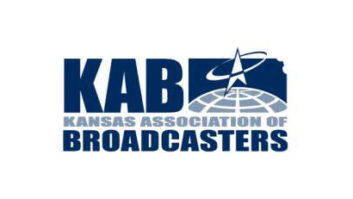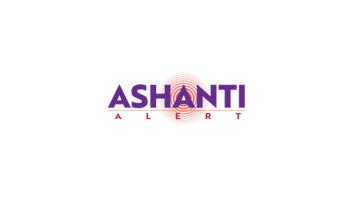
A Vote for WavePad
I was using Audacity (“These Tools Won’t Break the Bank,” Oct. 5) at work to produce audio clips for the Internet, but when I got a new computer for my home studio I discovered I needed something a little more sophisticated.
For one thing Audacity doesn’t use a mouse scroll wheel to zoom in and out, and I do that a lot when editing my syndicated radio program. So I did a quick Internet search and stumbled onto WavePad, by NCH Software, an Australian company.
If wasn’t free, like Audacity, but it wasn’t much, and it was money well spent because it’s the easiest, smoothest and simplest audio editor I’ve ever used.
Gordon Govier
Scribe Media
Monona, Wis.
A Closer Look at Audacity
After reading Curt Yengst’s article I felt compelled to write to clear up inaccuracies in his assessment of the Audacity audio editing shareware program.
He writes, “The editing was nowhere near as easy or precise as the others. In fact, any cuts in an audio track automatically rippled; meaning the audio to the right of the portion being removed is butt-spliced to the audio on the left of the edit. There’s no way to defeat this.”
This statement is correct, at least in part. However, as an everyday user, I have found other methods that make Audacity one of the most useful tools in a producer’s audio arsenal.
To avoid the pratfalls of the “rippled butt-splice,” one can select the Split Cut feature from the Edit section of the toolbar, after a portion of audio to be excised is selected. Once Split Cut is clicked, the corresponding section of audio is removed (and placed in a buffer for pasting to any audio track or point in the timeline elsewhere), and the edited original track is cleft in twain with two separate, “movable” portions of audio created to either side of the edit and a clear “gap” remaining where the edit was performed.
This allows the audio timeline to be “slid” to wherever the editor chooses using the Time Shift Tool, and other portions of audio can even be inserted into the gap, allowing the editor to butt them up against one another if desired.
Also, wherever Split Cut or even the even easier Split edit command are used, Audacity will allow different audio tracks to be butted up against “split points” in other tracks seamlessly (again, with the Time Shift Tool) and it shows the user graphically during the edit by illuminating the edit point with a yellow line to indicate the unbroken integration between audio tracks.
Further, Mr. Yengst states in the article that there is “no way to record additional audio onto existing tracks” and that “MP3 encoding requires a separate download.” Yet both these statements are incorrect.
I have used the Audacity platform on machines running both Windows XP and Windows 7, and both versions utilize an “append record” feature that will record audio onto the end of existing tracks simply by holding the Shift key on the user’s keyboard and clicking the Record button with the mouse. These after-the-fact bits of audio can then be copied and inserted into the track timeline anywhere the user chooses, moved about using the Time Shift Tool, thus giving the user virtually unlimited editing flexibility.
As for MP3 encoding, there are options under the File/Export section that allow the user to select his or her chosen encoding and output method. “MP3 file” is among the many choices.
Dean R. Amsler
CEO/President
MadKid Media
Rochester, N.Y.
Curt Yengst replies:
I was surprised to see that I had apparently missed several features of this program so I went back and tried it again. I still could not find them. I checked the Help file, to no avail.
Finally I went back to the download site and realized the cause of the discrepancy. I had been evaluating an old version of the program. I had somehow gotten version 1.2.6. When I downloaded the latest version, 1.3.13, and ran it …wow! What a difference. All the features you mention were there, and then some. I was very impressed, considering the program’s low price (nothing). I also was relieved, as your note had me thinking I was losing what few marbles I have left.
My humblest apologies to you and other fans, and especially to the makers of Audacity. They’ve done a fine job, and the program definitely is worth a try by anyone looking for multitrack production on the cheap. Thank you for taking the time to straighten me out.
The moral? When using or evaluating software, make sure you have the latest version.
Is There a Problem, Officer?
Awhile back, RW asked for reader experiences with remote broadcasts.
In October of 1975 I placed on the air a 3 kW FM station to supplement my daytime AM, partially in order to broadcast our winning high school basketball games. Our first game was 65 miles away; I was certain we’d have a large listening audience because few would drive that far and this was the first time the Wayne Blue Devils team would be broadcast live. Before that, we’d recorded games and played them back next morning on the AM.
For some reason, as I left the station this time I said to the announcer, “If we go off the air, call the sheriff.” Why I said that I don’t know. I had never said it before nor would I again.
We arrived at the gym, found our phone line and started broadcasting, after having talked to the studio operator to confirm that all was well. Of course, we could not hear my little 3 kW station ourselves, 65 miles away in the gym.
Hmmmm, approaching halftime, two deputy sheriff officers walk into the gym, straight to our broadcast booth. Yup, we had been disconnected, and my off-the-cuff remark about calling the sheriff turned out to be a godsend. We redialed and were back on the air.
Another time we were cut off in the middle of a big game in Ukiah, Calif. It seems someone in the San Francisco office of the phone company decided that all the connection plugs should be pulled before he went home. It took awhile before we found someone at the phone company to plug us back in again.
Ted Storck
Surprise, Ariz.
Protect LPAMs
In the Sept. 7 Readers Forum, Bob Gonsett expressed his opinion regarding FCC Part 15 AM transmission. I am familiar with this topic, having operated FCC-certified LPAM transmitters for over five years.
LPAMs include “talking houses” … churches that utilize a looped broadcast of services to their immediate area … people who broadcast the schedule of high school sports for parents picking up their children … and yes, those who would like to have their own legal broadcast to a local community, although the range is limited.
The LPAM community is large and growing, and it shows interest in a 10-watt , licensed service, if Congress would only listen. In the United States and Canada, Part 15 is the only legal venue for an unlicensed person to broadcast; and it is cherished. This service is generally harmless and should not be discouraged.
Bruce Hammond
Columbus, Ohio
AM ‘Loophole’
Recent discussion in Radio World has focused on license-free AM, including a letter from Robert Gonsett about his perception of an “AM loophole.”
Let’s take a moment to look at the regulation under which most of these outdoor-mounted AM transmitters have been certified, namely Part 15.219. Examining the e-docket access, text-only version of Part 15 regulations from the Government Printing Office website, quoting verbatim:
15.219(a) — The total input power to the final radio frequency stage (exclusive of filament or heater power) shall not exceed 100 milliwatts.
15.219(b) — The total length of the transmission line, antenna and ground lead (if used) shall not exceed 3 meters.
The definition of the ground lead had been debated to the point where even I was curious. I actually posed the question to a couple of well-versed English professors at a university in Connecticut. Their expert opinions were that, as written, the structure or mounting apparatus to which the transmitter is affixed is not legally considered any portion of any ground lead and that only a wire lead itself was a ground lead, by definition.
There has been, however, more recent activity in enforcement targeting Part 15 AM operators.
In reviewing a sampling of Notices of Unlicensed Operation, I’ve seen instances where the inspecting agent apparently or inadvertently cites field strength tested against Part 15.209 alone — a regulation that is written strictly by a field strength definition. Part 15.219 does not have any field strength limitation associated with it, just the input power and antenna/ground-lead length limitation. I have seen other NOUOs where installations that should have been inspected against 15.219 apparently weren’t.
Whether this is an oversight or an attempt to lessen use of these devices is something I have yet to ascertain. A legally knowledgeable operator could present a legal challenge if they were perceptive enough.
As we know, enforcement in this area usually is complaint-driven. Was it a licensed broadcaster having an issue with this particular AM operator? (There has been a Caribbean FM pirate operating with hundreds of watts on 106.5 in the Bridgeport, Conn., area for two years and it has yet to be shut down, yet enforcement actions are leveled against 100 milliwatt AMs. I attempted to contact the New York FM that is being interfered with; the engineer didn’t return my call.)
In a Freedom of Information Act request, I was able to unearth the existence of a 22-page FCC document that is used in inspecting such low-power AM devices operated by individuals. The document, however, was not released to me, citing that its release would provide information to circumvent the regulations. This in itself suggests other “loopholes” that may not sit well with Mr. Gonsett, especially if the discovery of such would allow legal operation of these devices with increased range.
In discussing this topic, I get almost as many different answers as the number of engineers I ask. One or two are quick to whip out their NEC calculations, charts and graphs with a diatribe and a self-justifying black-and-white view of what they see as the only correct view. Others lean toward the view of my English scholars: “What is written is all you’ve got.” Those people view the English definition of a ground lead actually being a wire from the ground terminal of the device to the point where the wire’s end is secured, whether it’s the mounting structure of the device or a ground rod driven into the earth.
Much to Mr. Gonsett’s chagrin, 15.209 does deal with field strength but only as an alternative to operation under 15.219. Many of my forum membership also operate campus-limited stations under Part 15.221, yet another regulation defined by a specific field strength dealing with AM band operations on the grounds of an educational institution.
But it’s comical that anybody is all distressed about an AM signal of one-tenth of a watt. If a consulting engineer or even a licensed, full-power terrestrial broadcaster is so worried about a Part 15 AM “station” taking away audience, they have bigger problems. If they feel threatened by a signal whose ultimate building penetration is so poor, they really need to re-evaluate their station operation.
Bill DeFelice
Webmaster
CampusBroadcaster.net
HobbyBroadcaster.net
Fairfield County, Conn.












